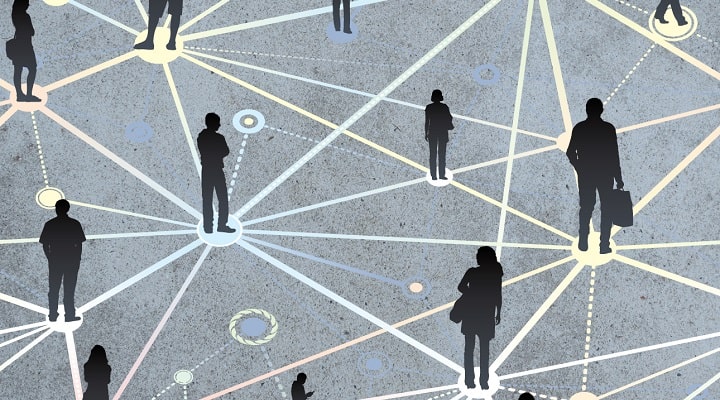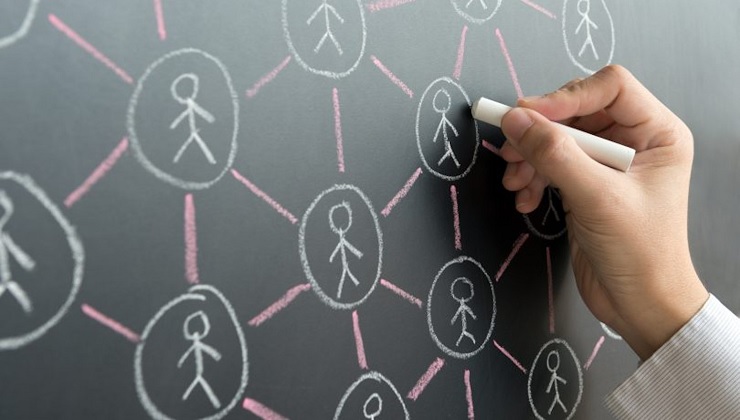Social capital means that people sit in the same boat, and each uses their expertise to move the ship and reach the destination. This is the simplest example to understand the concept of social capital. This term has recently become popular, and people are searching for it, but it is an old concept that many have researched. In this article, we take a closer look at the boats moving toward common goals; These boats may represent an organization or a community. We also explore why cruise passenger engagement is considered “capital” and is so important.
What is social capital?
The results and achievements of positive human interactions make this type of capital. These results are tangible and sometimes intangible, from support and ideas for business development to valuable data you can get from others. For example, your interaction with your colleagues today leads to completing a project and earning real money. Still, your interaction with your neighbor may not benefit you. However, you know that if you ask him for help in the future, he will not hesitate; This is an intangible result of social capital.
Each participates in social investment when different people gather in a group for a common goal and provide the resources needed to achieve that goal.
Examples of social capital
If you pay attention to your daily communication, you will notice many examples of this capital. Social capital in Iran is a tangible and understandable concept for people; however, let’s examine one of its most interesting foreign examples.
The New York Times magazine published the results of a study in which wealthy people’s friendship with the poor significantly reduces poverty. This research, 72 million people were examined, and more than 80% were between 25 and 45 years old. These people lived in America, and their virtual friendships were checked on Facebook.
The research indicated that if the children of low-income families grow up in neighborhoods and communities where 70% of their friends are children of wealthy families, their income will be almost 20% higher than the average income of their family. Also, according to this research, economic communication affects children consciously or unconsciously in addition to factors such as school and family.
Types of social capital
Social capital is used in different cases and different ways. For this reason, different types have been defined for it. In the following, we will explain each type of social capital.
- Communication capital (Bonding): This type of communication is established between people with common goals and tasks, who are usually on the same level. For example, students can gain communication capital by networking with each other.
- Bridging capital: This is the interaction between different groups, each of them seeking unique interests, but there is harmony between their interests. For example, the relationship between managers and employees of the organization is a bridging capital to achieve profit and carry out projects.
- Linking capital: This type of social capital represents the relationship between the government and the people.
How to increase our social capital?
Communication is the only source of acquiring this spiritual capital. These connections may be with family members or with friends and colleagues. To gain social capital, you should maintain your current relationships and seek to enlarge your circle. Attending friendly, family, and business events is the most important thing you can do to grow this type of capital.

Fortunately, these days we have an important practical tool for social investment. Nowadays, most people use the Internet, and social networks are one of the biggest boons in today’s world for networking. In the following, we explain the role of the Internet in this field in more detail.
The role of the Internet in social investment
The Internet has changed social capital and created diverse ways to create networks of communication between people, businesses, and platforms. In the following, we give some examples of the role of the Internet and virtual space in social capital.
- On many sites and store pages, users and new buyers pay attention to the opinions and comments of previous buyers and decide to buy based on these opinions.
- Online platform developers find new ways of marketing, product development, and support based on user comments and opinions to create more value for customers and increase their sales.
- People communicate with each other in online games and strive for a common goal. Sometimes, online connections even make their way into the real world.
- Small businesses use social capital in online platforms to introduce their products to users.
Currently, many communications are formed on the Internet and benefit both parties. Some of these relationships enter the real world, and others remain at the level of virtual communication. For example, many freelancers have a vast communication network in messengers and social networks, but many members of their communication network may not have met even once!
Take the Internet and social networks seriously to create social capital.
What are the advantages and disadvantages of social capital?
Suppose you are interested in studying and learning in business or personal growth and development. In that case, you know how much emphasis is placed on developing effective communication and networking. Networking is the social capital you have to earn for yourself. A comprehensive communication network has many advantages. You probably know many people who got their jobs through the recommendations of their acquaintances.
There is an interesting English proverb: “It’s not what you know, it’s who you know,” which means: “It’s who you know, not what you know!” This proverb clearly defines the importance of having a solid communication network. In the following, we will examine the advantages and disadvantages of this concept in more detail.
Advantages
You can probably name dozens of benefits to social capital before you read this section. But we introduce advantages that few people pay attention to. Remember that gaining social status, a job, or a better income are not the only benefits of powerful networking.
- improving the state of mental health due to communication with different people;
- increasing self-confidence ;
- improving the level of cooperation and respect among group members;
- obtaining new opportunities for the present and the future;
- the possibility of using the help of others when there is a problem;
- trust building;
- sharing helpful information and ideas to achieve common goals;
- Increase group security. (For example, when people in a neighborhood know each other, they are ready to help each other. As a result, the safety of the place increases.)
Disadvantages
One of the disadvantages of social capital in Iran is that many people know it as a “party” and have a negative view of this valuable intellectual property! Some people get their social capital and connections by luck; for example, they are born into a family with extensive and powerful connections. But most successful people make effective connections and achieve success by adequately using the network they have created. Most people only pay attention to the first group and never think they can build and operate a robust communication network.
Sometimes the social capital of some extraordinary people creates problems for most people. For example, criminal gangs are related to each other and form a vast and unbreakable network; The social capital of criminal groups is used up at the expense of people and may even seriously harm them.
Another example of destructive social capital is the connections between high-level managers in society. Sometimes active managers in a field together decide to increase the price of a product. Since there is no competitor except themselves in the market, customers will not have the ability to deal with them and will be forced to buy the product at a higher price to meet their needs.
The difference between social and human capital
Other concepts, such as human capital, may be confused with social capital. Human capital means a person is valuable to a group or organization because of his skills and expertise. In this type of capital, a person usually provides his skills and expertise to a group and receives money in return. But in social capital, a person does not receive an amount for the services he provides to others; instead, he will use the help of others in another situation.
last word; Acquiring social capital does not require money
This article explains social capital and how it can be obtained. Many investments today are such that you need more skill than money to get them. People who have learned communication skills and can network have social capital and can use it to earn money.
Intellectual assets need management just like material assets. Once you’ve built your network, you must protect it and work to get the most out of your connections. Remember that relationships are sustainable when they are mutually beneficial.



